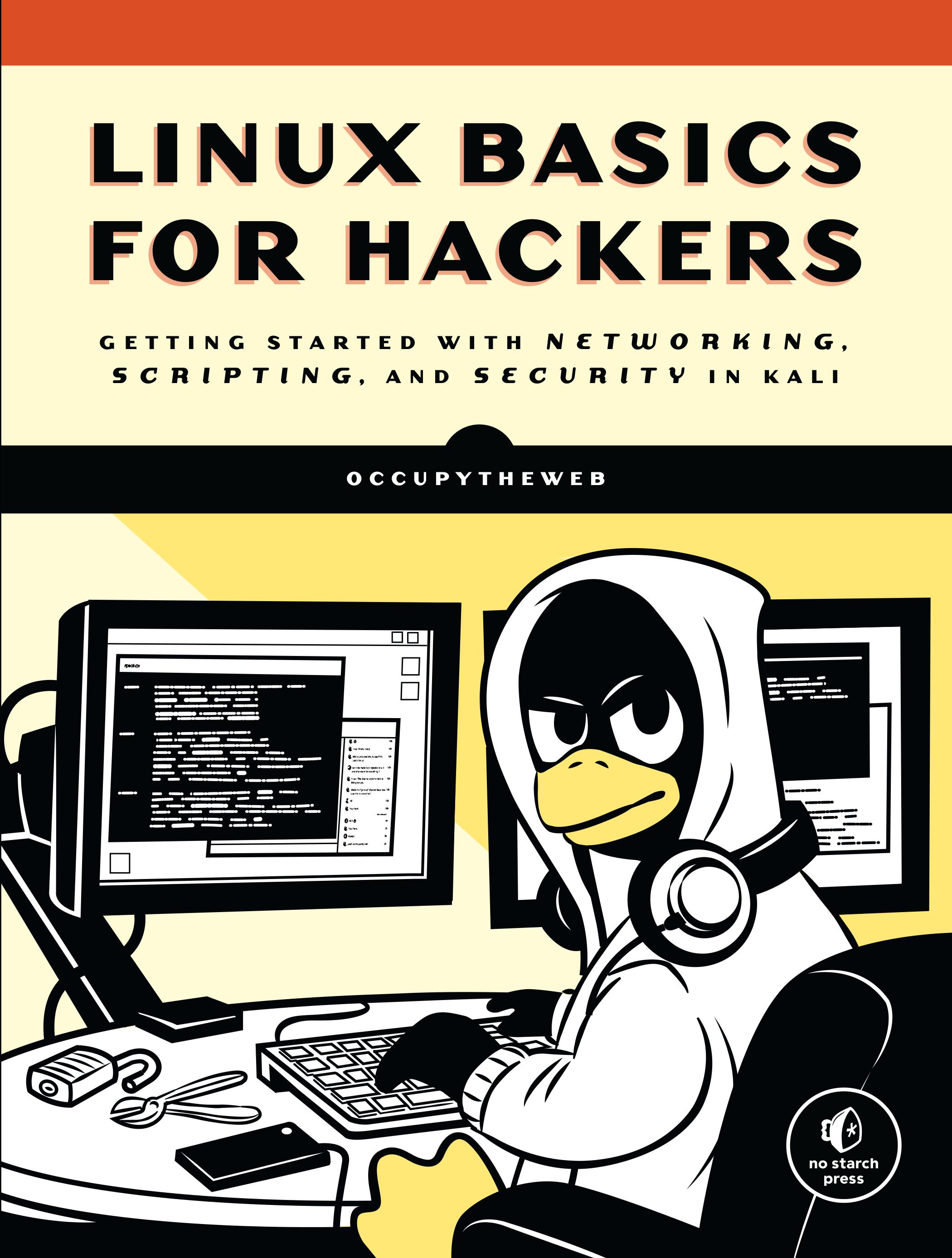
Linux Basics For Hackers
Explore the intricate world of hacking and cybersecurity with this comprehensive guide, designed for aspiring hackers and cybersecurity enthusiasts. Delve into Linux fundamentals, network manipulation, scripting in bash and Python, ethical hacking principles, penetration testing techniques, and much more. Written by an experienced hacker with insights from military and intelligence agencies, this book offers a practical, hands-on approach to mastering essential skills for navigating the digital frontier.
pages: 250, views: 924
INTRODUCTION
Hacking is the most important skill set of the 21st century! I don’t make that statement lightly. Events in recent years seem to reaffirm this statement with every morning’s headline. Nations are spying on each other to gain secrets, cyber criminals are stealing billions of dollars, digital worms demanding ransoms are being released, adversaries are influencing each other’s elections, and combatants are taking down each other’s utilities. These are all the work of hackers, and their influence over our increasingly digital world is just beginning to be felt. I decided to write this book after working with tens of thousands of aspiring hackers through Null-Byte, https://www.hackers-arise.com/, and nearly every branch of the US military and intelligence agencies (NSA, DIA, CIA, and FBI). These experiences have taught me that many aspiring hackers have had little or no experience with Linux, and this lack of experience is the primary barrier to their starting the journey to becoming professional hackers. Almost all the best hacker tools are written in Linux, so some basic Linux skills are a prerequisite to becoming a professional hacker. I have written this book to help aspiring hackers get over this barrier.
Hacking is an elite profession within the IT field. As such, it requires an extensive and detailed understanding of IT concepts and technologies. At the most fundamental level, Linux is a requirement. I strongly suggest you invest time and energy into using and understanding it if you want to make hacking and information security your career. This book is not intended for the experienced hacker or the experienced Linux admin. Instead, it is intended for those who want to get started along the exciting path of hacking, cybersecurity, and pentesting. It is also intended not as a complete treatise on Linux or hacking but rather a starting point into these worlds. It begins with the essentials of Linux and extends into some basic scripting in both bash and Python. Wherever appropriate, I have tried to use examples from the world of hacking to teach Linux principles.
In this introduction, we’ll look at the growth of ethical hacking for information security, and I’ll take you through the process of installing a virtual machine so you can install Kali Linux on your system without disturbing the operating system you are already running.
What’s in This Book
In the first set of chapters you’ll get comfortable with the fundamentals of Linux; Chapter 1 will get you used to the file system and the terminal, and give you some basic commands. Chapter 2 shows you how to manipulate text to find, examine, and alter software and files. In Chapter 3 you’ll manage networks. You’ll scan for networks, find information on connections, and disguise yourself by masking your network and DNS information. Chapter 4 teaches you to add, remove, and update software, and how to keep your system streamlined. In Chapter 5, you’ll manipulate file and directory permissions to control who can access what. You’ll also learn some privilege escalation techniques. Chapter 6 teaches you how to manage services, including starting and stopping processes and allocating resources to give you greater control. In Chapter 7 you’ll manage environment variables for optimal performance, convenience, and even stealth. You’ll find and filter variables, change your PATH variable, and create new environment variables. Chapter 8 introduces you to bash scripting, a staple for any serious hacker. You’ll learn the basics of bash and build a script to scan for target ports that you might later infiltrate. Chapters 9 and 10 give you some essential file system management skills, showing you how to compress and archive files to keep your system clean, copy entire storage devices, and get information on files and connected disks. The latter chapters dig deeper into hacking topics. In Chapter 11 you’ll use and manipulate the logging system to get information on a target’s activity and cover your own tracks. Chapter 12 shows you how to use and abuse three core Linux services: Apache web server, OpenSSH, and MySQL. You’ll create a web server, build a remote video spy, and learn about databases and their vulnerabilities. Chapter 13 will show you how to stay secure and anonymous with proxy servers, the Tor network, VPNs, and encrypted email. Chapter 14 deals with wireless networks. You’ll learn basic networking commands, then crack Wi-Fi access points and detect and connect to Bluetooth signals. Chapter 15 dives deeper into Linux itself with a high level view of how the kernel works and how its drivers can be abused to deliver malicious software. In Chapter 16 you’ll learn essential scheduling skills in order to automate your hacking scripts. Chapter 17 will teach you core Python concepts, and you’ll script two hacking tools: a scanner to spy on TCP/IP connections, and a simple password cracker.
What Is Ethical Hacking?
With the growth of the information security field in recent years has come dramatic growth in the field of ethical hacking, also known as white hat (good guy) hacking. Ethical hacking is the practice of attempting to infiltrate and exploit a system in order to find out its weaknesses and better secure it. I segment the field of ethical hacking into two primary components: penetration testing for a legitimate information security firm and working for your nation’s military or intelligence agencies. Both are rapidly growing areas, and demand is strong. Penetration Testing
As organizations become increasingly security conscious and the cost of security breaches rises exponentially, many large organizations are beginning to contract out security services. One of these key security services is penetration testing. A penetration test is essentially a legal, commissioned hack to demonstrate the vulnerability of a firm’s network and systems. Generally, organizations conduct a vulnerability assessment first to find potential vulnerabilities in their network, operating systems, and services. I emphasize potential, as this vulnerability scan includes a significant number of false positives (things identified as vulnerabilities that really are not). It is the role of the penetration tester to attempt to hack, or penetrate, these vulnerabilities. Only then can the organization know whether the vulnerability is real and decide to invest time and money to close the vulnerability. Military and Espionage
Nearly every nation on earth now engages in cyber espionage and cyber warfare. One only needs to scan the headlines to see that cyber activities are the chosen method for spying on and attacking military and industrial systems. Hacking plays a crucial part in these military and intelligence-gathering activities, and that will only be more true as time goes by. Imagine a war of the future where hackers can gain access to their adversary’s war plans and knock out their electric grid, oil refineries, and water systems. These activities are taking place every day now. The hacker thus becomes a key component of their nation’s defense.












